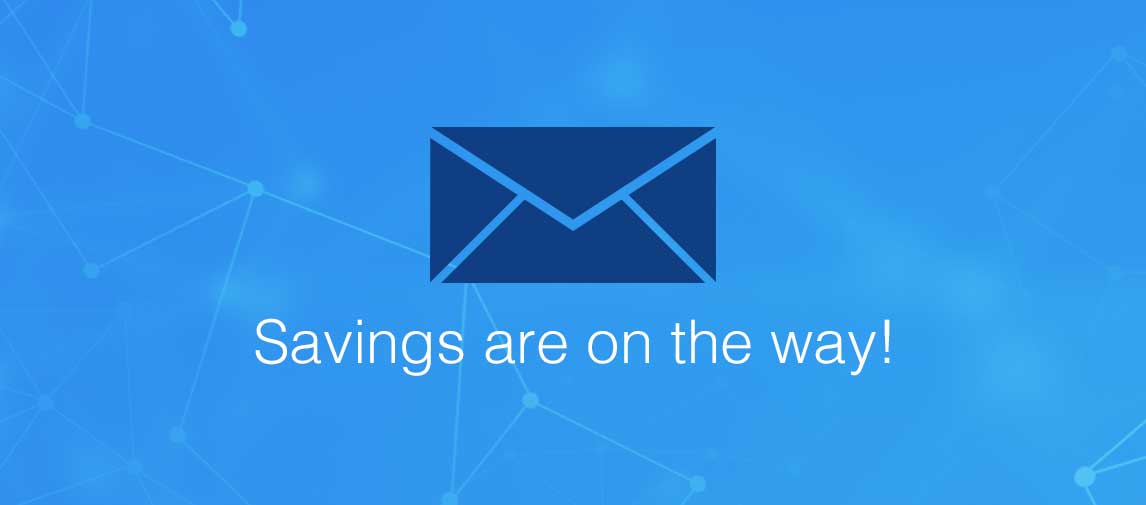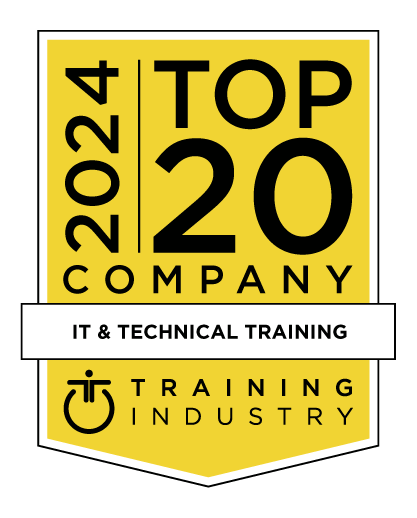title
Please take a moment to fill out this form. We will get back to you as soon as possible.
All fields marked with an asterisk (*) are mandatory.
Microsoft Dynamics 365: Finance and Operations Apps Solution Architect
Course Description
Overview
The Dynamics 365 Finance and Operations solution architect is a trusted advisor who consults with organizations and implementation team members to refine business needs into a well-defined and cost-effective solution. The architect is accountable for the integrity and successful delivery of the complete solution design. The architect provides critical guidance and support from pre-sales throughout the remainder of the project lifecycle. They have great breadth of knowledge and experience designing solutions that meet business needs. The solution architect may have a technical, functional, or industry background. The solution architect must demonstrate knowledge of all Dynamics 365 apps and Power Platform. They must have deep understanding of Finance and Operations apps. In addition, they have extensive domain knowledge in one or more industry verticals. This course is designed to prepare those who are aspired to be solution architects and those who are new to this role to learn more about the technical information that solution architects will be dealing with during implantation.Objectives
Audience
Prerequisites
-
Students must complete the following learning paths before attending this instructor led training:
- Architect solutions for Dynamics 365 and Power Platform
- Use Success by Design for Unified Operations apps solutions
Topics
- Introduction to becoming a solution architect
- Existing product and platform skills
- Expectations of a solution architect
- Solution architect role during project phases
- Pillars of a great architecture
- Introduction and discovery overview
- Initial customer discovery
- Customer discovery meetings
- Customer communication strategy
- Introduction and overview to proposing a solution
- Identify solution components
- Develop and validate a demo
- Identify potential third-party components
- Recognize strengths and weaknesses in a solution
- Introduction
- Lead requirement capture sessions
- Identify functional requirements
- Identify non-functional requirements
- Confirm and finalize requirements
- Introduction to fit gap analysis
- Determine feasibility of requirements
- Refine requirements from proof of concept insights
- Categorize business requirements and perform gap fit analysis
- Evaluate Dynamics 365 and Microsoft Power Platform apps
- Introduction
- Understand the functionality and tools of Lifecycle Services
- Lifecycle Services security
- Reuse existing assets, copy, and share data
- Perform actions in the Asset library
- Work with the Task recorder
- Business process modeler (BPM)
- Issue search and support
- Get product updates from Lifecycle Services
- Exercise - use the Task recorder to create and edit a recording
- Exercise - create a business process in the business process modeler
- Exercise - create a support incident
- Introduction
- Use implementation methodologies for a successful implementation
- Cloud implementation - analysis
- Cloud implementation - design and develop
- Cloud implementation - test
- Cloud implementation - deploy and operate
- On-premises implementation - analysis
- On-premises implementation - design and develop
- On-premises implementation - test, deploy, and operate
- Gathering and analyzing the requirements
- Create functional design documents (FDD)
- Introduction
- Access Dynamics 365 Translation Service
- Types of requests
- Reuse translations (recycling)
- Custom-trained machine translation system
- Exercise – Create, review, and regenerate a user interface translation request
- Exercise – Create, review, and regenerate a documentation translation request
- Exercise – Create a translation memory file
- Introduction
- Select a data integration (import/export) strategy
- Common migration scenarios and tools
- Bring your own database (BYOD)
- Test a data migration and validate output
- Introduction
- Data management concepts
- Use data entities for data management and integration
- Work with the Data management workspace
- Using Standard and Enhanced views for tiles
- Use templates in data management
- Export, import, and copy data into a legal entity
- Lab - Explore the Data management workspace
- Lab - Export data using the Data management workspace
- Database movement operations
- Data sharing framework
- Introduction
- Create user acceptance test libraries
- Record test cases and save to BPM
- Synchronize and configure your test plan in Azure DevOps
- Run user acceptance tests
- Data task automation
- Exercise - Build test scripts to test business functionality
- Implementation project overview
- Roles in a Dynamics 365 implementation
- Project phases
- Implementation planning and architecture
- Combining tools and solutions for impactful implementations
- Overview of the FastTrack program
- FastTrack engagement across the phases
- Solution blueprint review
- Become a FastTrack recognized solution architect
- ALM methodologies
- Design and create models
- Plan the build, test, and quality control processes
- Plan the release, change, and risk management processes
- Introduction
- Customization models
- Extension points for frameworks
- Develop code to extend a framework
- Implement the SysOperationSandbox framework
- Lab - Extend an EDT
- Introduction
- Business event framework
- Create a new business event
- Activate business events
- Role-based security for business events
- Business events in Microsoft Power Automate
- Introduction
- Select an integration API
- Synchronous and asynchronous patterns
- Data integration scenarios
- Introduction
- Set up a data project and recurring data job
- Exercise - Create a data project and recurring data job
- Implement authorization to support integration
- Monitor status and availability of entities
- Develop data transformation
- Microsoft Dataverse integrations
- Work with composite data entities
- Azure Data Lake and Entity Store
- Change data in Azure Data Lake
- Power Platform convergence
- Introduction
- Understand different types of reports and inquiries
- Financial reporting
- Find inquiries and reports
- Generate and consume inquiries and reports
- Configure finance and operations apps for Microsoft Power Platform
- Lab - Work with reports
- Introduction
- Explore Microsoft Power Platform
- Describe the business value of the Power Platform
- Explore connectors and Microsoft Dataverse
- Describe how Power Platform works with Microsoft 365 apps and services
- Explore how Power Platform works with Microsoft Teams
- Describe how Power Platform works with Microsoft Dynamics 365 apps
- Describe how Power Platform solutions consume Microsoft Azure services
- Explore how Microsoft Power Platform apps work together
- Introduction
- Describe Power Platform administration
- Describe Power Platform security and governance
- Explore Microsoft Dataverse
- Examine Power Platform connectors
- Exercise - Build a basic Dataverse data model
- Introduction
- Demonstration
- Overview of the Dynamics 365 Unified Operations mobile app
- Page design guidelines
- Action design guidelines
- Form design requirements
- Design considerations
- Understand use cases for mobile apps
- Get the Dynamics 365 Unified Operations mobile app
- Introduction
- Upgrade from finance and operations version 7.x to version 10
- Update from finance and operations version 8.x to version 10.0.x
- Data upgrade
- Upgrade from AX 2012
- Migrate from AX 2009
- Introduction
- Diagnose performance issues by using Trace parser
- Load testing by using the Performance SDK
- Monitor performance by using SQL Insights
- Create a SQL trace by using the SQL Profiler
- Monitor server health metrics in Lifecycle Services
- Exercise - Use the Environment monitoring tool in Lifecycle Services
- Introduction
- Understand the security architecture
- Encryption in finance and operations apps
- Manage users and security
- Set up and apply segregation of duties
- Run security reports
- Stay compliant with user licensing requirements
- Security diagnostics for task recordings
- Extensible data security policies
- Exercise - Import a user and assign security role
- Lab - Work with security
- Introduction
- Create and modify duties, privileges, and permissions
- Enforce permissions policy
- Extensible data security framework
- Apply security permissions
- Lab - Create a new security role and add duties
- Introduction
- Understand the go-live process
- Complete the Lifecycle Services methodology
- Perform user acceptance testing (UAT) for your solution
- FastTrack go-live assessment
- Request a production environment
- Introduction
- Feature management workspace
- Feature states
- Enable a feature
- Reschedule a feature
- Disable a feature
- Features that must be enabled
- Enable all features
- Check for updates
- Assign roles
- Features that use configuration keys
- Data entities
- Introduction
- Overview of Success by Design
- Reasons to use Success by Design
- Success by Design phases
- Implement Success by Design
- Track Success by Design activities and progress
- Introduction
- Solution blueprint review workshop overview
- Prepare for the Solution blueprint review
- Solution blueprint review participants
- Conduct the Solution blueprint review workshop
- Solution blueprint follow-up
- Introduction
- Overview of the Test strategy review workshop
- Prepare for the workshop
- Workshop implementation and follow-up
- Introduction
- Entity relationship diagram
- Out-of-the-box vs. custom tables
- Table configuration
- Introduction
- Business intelligence and analytics design workshop overview
- Prepare for the Business intelligence and analytics design workshop
- Conduct the Business intelligence and analytics design workshop
- Business intelligence and analytics design follow-up
- Introduction
- Gap solution design workshop overview
- Prepare for the Gap solution design workshop
- Conduct the Gap solution design workshop
- Gap solution design follow-up
- Introduction
- Data migration strategy overview
- Prepare for the Data migration workshop
- Conduct the Data migration strategy workshop
- Introduction
- Security workshop topics
- Introduction
- Integration design review workshop overview
- Prepare for the Integration design review
- Conduct the Integration design review
- Integration design review workshop follow-up
- Introduction
- Dual-write implementation workshop overview
- Prepare for the workshop
- Workshop implementation and follow-up
- Introduction
- Solution performance workshop topics
- Define performance benchmarks and success criteria
- Timing of the Solution performance review
- Prepare for the workshop
- Workshop implementation and follow-up
- Introduction
- Purpose of the Cutover strategy workshop
- Timing of the Cutover strategy review
- Cutover strategy workshop overview
- Prepare for the workshop
- Workshop implementation and follow-up
- Introduction
- Timing of the Post go-live workshop
- Post go-live workshop overview
- Prepare for the workshop
- Post go-live workshop implementation and follow up
- Introduction
- Set up your environment
- Explore personalization functionality
- Knowledge check
- Exercise - Customize your status bar
- Summary
- Introduction
- Manage menus: Favorites
- Manage menus: Dashboards by role
- Manage menus: Key performance indicators
- Manage forms: Fields
- Manage forms: Filters and ranges
- Configure reports
- Knowledge check
- Exercise – Create favorites
- Exercise – View role-based dashboards
- Exercise – Change form fields and queries
- Exercise – Change report output
- Summary
- Introduction
- Create entities
- Manage security
- Integrate with Microsoft Office
- Knowledge check
- Exercise – Add a field to a data entity
- Exercise – Use Excel to view and update data
Related Courses
-
Manage Financial Operations with Dynamics 365 Finance
MOC-MB-310T00- Duration: 4 Days
- Delivery Format: Classroom Training, Online Training
- Price: 2,380.00 USD
-
Microsoft Dynamics 365 Supply Chain Management
MOC-MB-330T00- Duration: 5 Days
- Delivery Format: Classroom Training, Online Training
- Price: 2,995.00 USD
Self-Paced Training Info
Learn at your own pace with anytime, anywhere training
- Same in-demand topics as instructor-led public and private classes.
- Standalone learning or supplemental reinforcement.
- e-Learning content varies by course and technology.
- View the Self-Paced version of this outline and what is included in the SPVC course.
- Learn more about e-Learning
Course Added To Shopping Cart
bla
bla
bla
bla
bla
bla
Self-Paced Training Terms & Conditions
Exam Terms & Conditions
ONCE YOU PURCHASE THIS EXAM YOU WILL NOT BE ABLE TO CANCEL YOUR ORDER. You are billed for the course after hitting submit. Exams are non-refundable.
Vouchers expire 12 months from the date they are issued, unless otherwise specified in the terms and conditions. Voucher expiration dates cannot be extended. All sales are final.Please refer to the full terms and conditions here.
Sorry, there are no classes that meet your criteria.
Please contact us to schedule a class.

STOP! Before You Leave
Save 0% on this course!
Take advantage of our online-only offer & save 0% on any course !
Promo Code skip0 will be applied to your registration
Purchase Information
title
Please take a moment to fill out this form. We will get back to you as soon as possible.
All fields marked with an asterisk (*) are mandatory.










